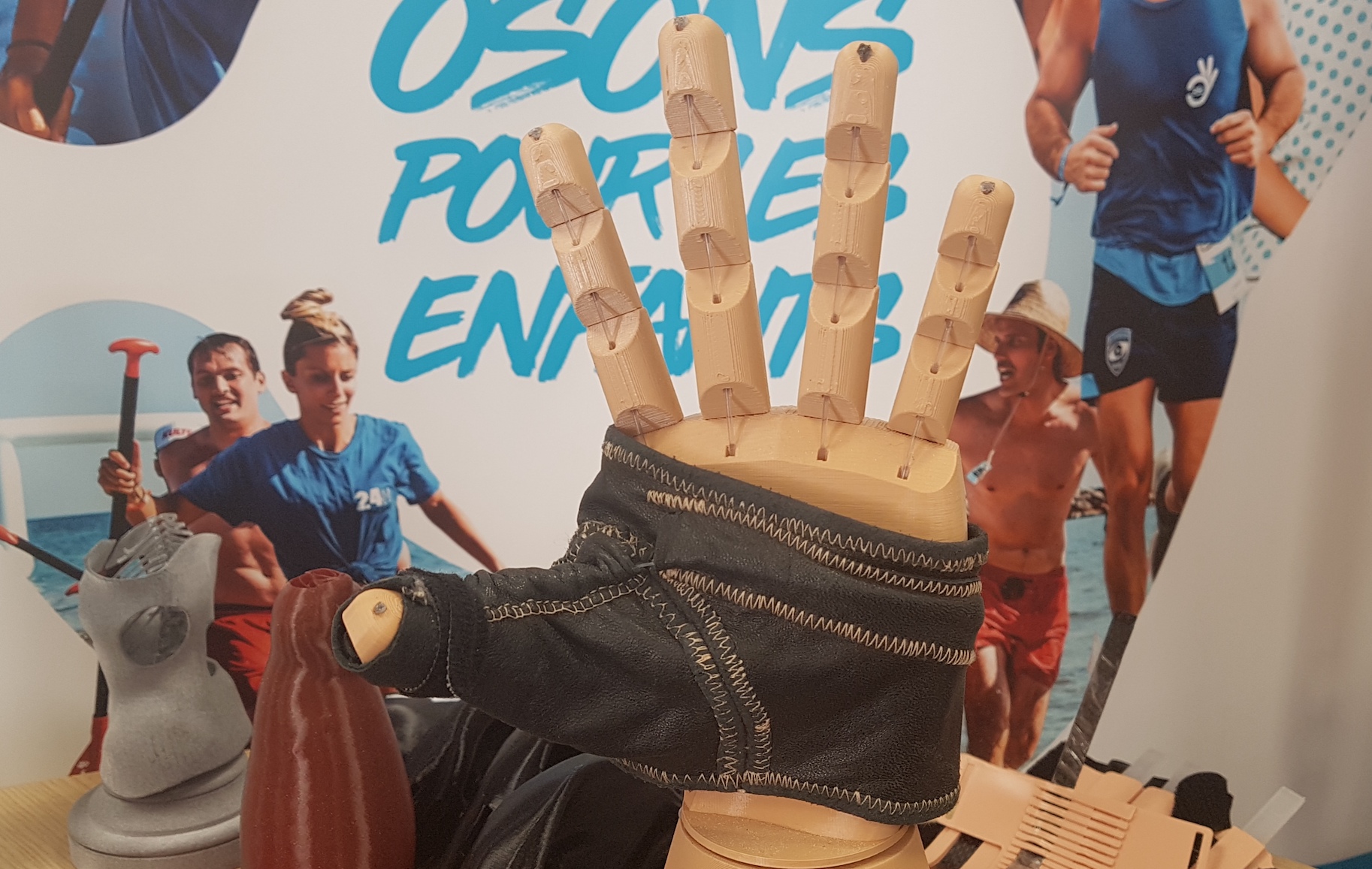
What is a Humanlab?
Inspired by Fab Labs, spaces for learning and innovation which provide access to an environment, skills and technology for producing technical devices, Humanlabs are collaborative spaces for digital creation in response to the needs of people living with disabilities.
Through their community of project teams (made up of volunteers and partners), they can develop technical support solutions for disabilities which are not yet available on the market, which are too expensive or which are not suitable for addressing certain issues.
“People with disabilities come with an idea, a wish or a need, and if their proposal is accepted they are made project leaders. The Humanlabs then support them by providing all of the expertise needed to make their project a reality, utilising low-cost technological and software components. All of the technical and assembly details are made available free to access for anyone wishing to make a replica”, explains Christine Azevedo Coste, head of the CAMIN project team and co-manager of the exploratory initiative humanLab Inria.
Humanlabs offer a complementary approach for adapting or making small customisations to commercial devices, or even for replacing devices which are too costly or which do not exist. Examples of the types of devices produced include new joysticks for electric wheelchairs or motorised thumb braces complete with control unit.
The first Humanlab, MyHumanKit, was created in Rennes in 2017.
From the Humanlab network to the exploratory initiative humanLab Inria (hli)
Inria joined the Humanlab network in 2021 to make its own contribution to addressing the needs of people living with disabilities, and it wasn’t long before the Inria researchers and engineers involved began seeking to expand the commitment made by the institute.
“We were called upon on a number of occasions to provide our expertise for projects, and that gave us the idea of launching an exploratory initiative aimed at helping the different Humanlabs to go a step further with certain technological projects”, explains Roger Pissard-Gibollet, SED Grenoble engineer and co-manager of the exploratory initiative humanLab Inria.
The exploratory initiative humanLab Inria (hli) was launched a few months later, the aim being to draw upon all of Inria’s expertise, across all centres...and all fields. “We didn't want one single team to be in charge of this exploratory initiative. We wanted to take an interdisciplinary approach, involving all of the different teams, centres and fields”, explains Christine Azevedo Coste. “Our role is to act as a relay between the needs of the different Humanlabs and Inria project teams.”
Several projects already launched
The Rainbow project team at the University of Rennes Inria Centre, for example, worked on a project for building an electronic cane capable of detecting obstacles using sounds of different frequencies. This included supervising an INSA placement for development of the final version.
Other innovations, such as the Télescopince, a telescopic gripper that can be used by people with difficulties gripping things, who don't have a palmar grasp reflex, or who have a limited reach to pick up objects; Magic Control V2, a low-cost electric wheelchair environment control unit for controlling both the wheelchair and the user’s environment; and READForMe, a reading machine with the capacity to acquire text from a screenshot and to read it using a speech synthesizer, have all benefited from the expertise of the CAMIN project team and SED Grenoble.
But the flagship project supported by humanLab Inria remains Exofinger, launched to design a motorised hand brace (something not currently available on the market) for its project leader, Bastien, who has tetraplegia. Bastien wanted a system that would enable him to hold a pen in order to write his signature.
In response to this challenge, a number of groups came together at a Fabrikarium in Rennes (a 3-day hackathon): engineers from the Grenoble Alpes University Inria Centre (Laurence Boissieux, Christophe Braillon and Roger Pissard-Gibollet), researchers from the Camin project team at the Cote d’Azur University Inria Centre (Christine Azevedo-Coste and Clément Trotobas), employees of Ariane Group, members of the HumanLabs MyHumanKit and Saint-Pierre, plus a researcher from Floss Manuals.
Following the Fabrikarium, humanLab Inria continued with development of the project. This involved placing a unit fitted with a motor on the user’s forearm. This motor unwound a cable connected to a splint through a leather glove, allowing them to bring their thumb and index finger closer together in order to grip objects. The user was also given a wireless button allowing them to bend or relax the thumb. A template generator was also developed, allowing the glove to be adapted to different body types. Inria staff from Sophia Antipolis, Rennes and Bordeaux sewed different sizes of gloves based on such templates. Validation tests involving a range of different users are set to be carried out in the coming weeks.